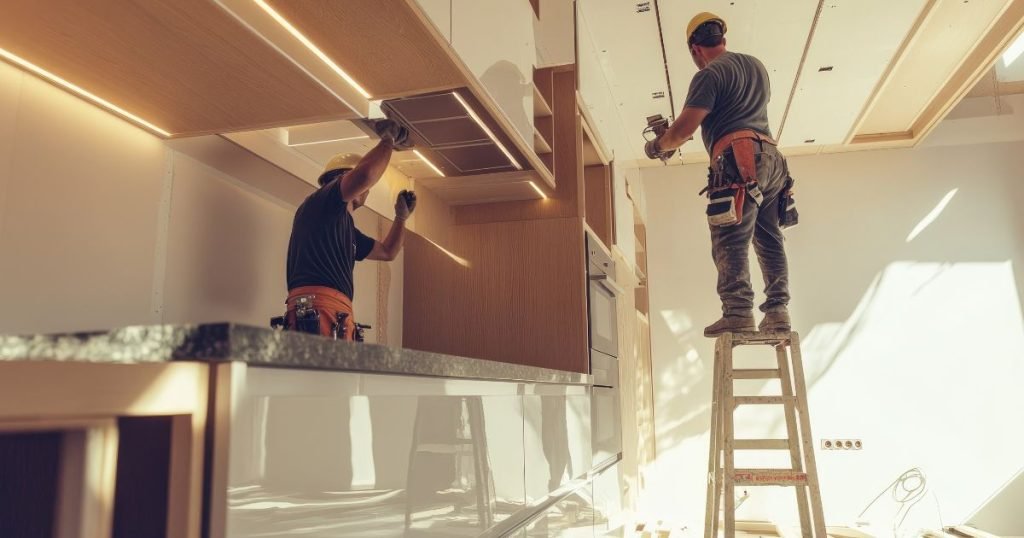California is celebrated for its beautiful weather and scenery, yet it’s equally recognized for its frequent seismic activity. Whether you own a historic bungalow or a modern condo, protecting your property from earthquake damage is a must. Smart renovations protect your loved ones while also maintaining your home’s long-term value.
In this guide, we’ll walk you through the most important Earthquake-Ready Renovations California homeowners should consider, from earthquake safety home improvements in California to seismic retrofitting California homes and selecting the best earthquake retrofitting contractors in California.
Why Earthquake-Ready Renovations Matter
California sits on multiple fault lines, making earthquakes an unavoidable reality. Even moderate tremors can cause walls to crack, foundations to shift, and damage plumbing or electrical systems. Proactive earthquake-proof renovations California can drastically reduce these risks.
Beyond safety, many insurance companies offer lower premiums for retrofitted homes, and some local governments provide grants or tax incentives for seismic upgrades. In short, investing in home safety upgrades for earthquakes is both a practical and financial decision.
Step One: Assess Your Home’s Vulnerability
Before making improvements, schedule a professional inspection. A qualified structural engineer or licensed contractor can:
- Pinpoint vulnerabilities in your home’s foundation, framing, or roof structure.
- Check if your home meets current building codes.
- Recommend a prioritized list of upgrades.
This baseline evaluation ensures your money goes to the most effective earthquake safety home improvements California offers.
Seismic Retrofitting California Homes: What It Involves
The term seismic retrofitting California homes describes structural modifications that make buildings more resilient to shaking. Common measures include:
- Foundation bolting: Securing the wooden frame (or “sill plate”) to the concrete foundation.
- Cripple wall bracing: Reinforcing the short walls between the foundation and the first floor to prevent collapse.
- Shear wall installation: Adding plywood or oriented strand board to strengthen lateral resistance.
- Chimney and masonry reinforcement: Preventing heavy brick or stone features from toppling.
These measures dramatically reduce the chance of a home sliding off its foundation or experiencing catastrophic structural failure.

Earthquake-Proof Renovations California: Beyond the Structure
While structural work is vital, non-structural improvements also matter. In reality, most earthquake-related injuries result from falling objects rather than the building itself collapsing. Consider these earthquake-proof renovations California homeowners often overlook:
- Securing heavy furniture: Anchor bookcases, TVs, and appliances to wall studs.
- Flexible gas connections: Install automatic gas shutoff valves and flexible hoses to reduce fire risk.
- Reinforced water heaters: Strap and brace units to prevent tipping.
- Shatter-resistant windows: Upgrade to laminated or tempered glass to reduce injuries from broken glass.
- Emergency essentials: Keep backup power and water supplies stored in easy-to-reach locations.
These relatively inexpensive steps complement larger structural upgrades.
Home Safety Upgrades for Earthquakes: Room-by-Room
Breaking your plan into sections makes it manageable:
- Garage: Strengthen overhead doors and ensure the frame is braced; garages are common weak spots.
- Kitchen: Install safety latches on cabinets to keep dishes from flying out.
- Bedrooms: Keep heavy items away from beds; secure mirrors and artwork.
- Attic and Roof: Check for unsecured tiles or solar panels and confirm they’re firmly anchored.
Thinking room-by-room helps you implement comprehensive home safety upgrades for earthquakes over time rather than all at once.
Earthquake-Resistant Building Materials California
If you’re undertaking a major remodel or building an addition, choose earthquake-resistant building materials California suppliers recommend. Examples include:
- Engineered lumber and steel framing for added strength.
- Fiber-cement siding that resists cracking.
- Lightweight roofing materials that reduce top-heavy loads.
- Flexible adhesives and sealants that move without breaking.
Incorporating these materials during construction can save significant costs and headaches later.
Finding the Best Earthquake Retrofitting Contractors California
Upgrades are only as good as the professionals who install them. When searching for the best earthquake retrofitting contractors California has to offer:
- Check credentials: Look for state licensing, seismic retrofit certifications, and insurance.
- Review experience: Ask how many retrofits they’ve completed in your area.
- Request references: Speak with past clients about their experience and satisfaction.
- Get multiple bids: Compare scope, cost, and timelines.
- Verify permits: A trustworthy contractor manages all required permits and inspections on your behalf.
Investing time in vetting contractors ensures your upgrades meet code and deliver true protection.
Combining Seismic Safety with Aesthetic Renovations
Many homeowners worry that seismic upgrades will spoil their home’s appearance. The upside is that most Earthquake-Ready Renovations California homeowners choose can be smoothly incorporated into an ongoing remodel. For instance:
- Hidden bolting and bracing: Structural work can be concealed behind walls or finished surfaces.
- Stylish built-ins: Anchored bookcases or cabinets can double as décor.
- Modern finishes: When replacing windows with shatter-resistant glass, choose frames that match your style.
Pairing safety with aesthetics means you don’t have to compromise on design while boosting protection.
Cost Considerations and Incentives
The cost of earthquake-proof renovations California varies widely based on home size, condition, and location. Simple retrofits may cost a few thousand dollars, while extensive structural work can run tens of thousands.
Check for local incentive programs. Cities like Los Angeles and San Francisco sometimes offer grants or rebates for seismic retrofitting California homes. Insurance discounts and increased resale value can also offset upfront costs.
Creating an Emergency Plan
Even the best earthquake safety home improvements California can’t eliminate risk. Every household should:
- Keep emergency kits with food, water, and first-aid supplies.
- Establish a communication plan for family members.
- Learn the proper steps to turn off gas, water, and electricity safely.
- Practice “Drop, Cover, and Hold On” drills regularly.
Preparation complements physical upgrades, ensuring your family knows what to do when a quake hits.
Danz Construction: Your Partner for Earthquake-Ready Renovations in California
When it comes to Earthquake-Ready Renovations California homeowners can trust, Danz Construction stands out for its experience and reliability. Serving communities throughout the Bay Area and beyond, the company specializes in seismic retrofitting, structural upgrades, and earthquake-resistant building practices. Their team works closely with each client to assess vulnerabilities, recommend cost-effective improvements, and execute projects that meet or exceed state safety codes. By combining expert craftsmanship with a customer-focused approach, Danz Construction helps protect your home and family while preserving your property’s long-term value.

Final Thoughts
Investing in Earthquake-Ready Renovations California is one of the smartest decisions a homeowner can make. From comprehensive seismic retrofitting California homes to practical home safety upgrades for earthquakes, every improvement adds a layer of protection.
Choosing earthquake-resistant building materials California during remodels, working with the best earthquake retrofitting contractors California, and incorporating thoughtful design means your house can stand stronger against the next big tremor.
Earthquakes may be part of life in the Golden State, but with the right planning and upgrades, your home can remain a haven no matter what the ground does beneath it.
Frequently Asked Questions (FAQs)
1. What are the most important earthquake-ready renovations California homeowners should consider first?
Start with seismic retrofitting, such as foundation bolting and cripple wall bracing. Then secure heavy furniture, add flexible gas lines, and strap water heaters to reduce secondary hazards.
2. How do I know if my house needs seismic retrofitting in California?
A licensed structural engineer or experienced contractor can inspect your home’s foundation, framing, and roof to pinpoint vulnerabilities and recommend specific upgrades.
3. Are there financial incentives for earthquake safety home improvements in California?
Yes. Some cities and counties offer grants, rebates, or tax credits for seismic retrofitting. Insurance carriers may also lower premiums for homes with documented upgrades.
4. Can earthquake-resistant building materials be used during a remodel or addition?
Absolutely. Using engineered lumber, steel framing, lightweight roofing, and flexible adhesives during remodels integrates safety features without sacrificing style.
5. How do I choose the best earthquake retrofitting contractors California offers?
Look for state licensing, seismic retrofit certifications, proof of insurance, and a portfolio of completed projects. Ask for references and confirm the contractor handles permits and inspections.

